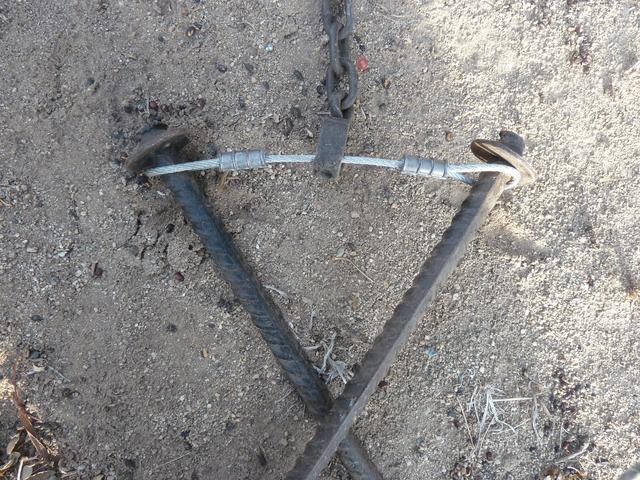Taximan - Nice to see you post. How are you doing? I would still like to come out for a visit and trapline ride along if you would ever consider inviting me. Ha!
Your double stake method looks very interesting. I appreciate that the flexible cable ends will easily pass through the swivel. Does that cable spreader allow more flexibility than using butterflies when sometimes the stakes hit a rock or root and the whole rig sort of binds and makes stake driving difficult? It looks like the stakes might be easier to pull than when using a double stake swivel. Do you get multiple uses per cable double stake spreader? Or, do you sometimes find too much wear to reuse?
My land traps terminate with a swivel like yours then a quick link. That way I can connect to a double stake swivel, single stake swivel, chain stake, or cable stake. I have the necessary components and anchors ready to connect to the quick link so it is easy to use the chosen desired method or switch to something else that becomes necessary. However, I am eager to try your idea and will make up some of your cable double stake spreaders.
To the beginner here and other beginners - butterflies are also called double stake swivels. And there are at least two types. One style is sold at Minnesota Trapline Supply and other places. The other style is sold by JC Connor named the chestnut double stake ring and may be sold at other places.
Again to the beginner here and other beginners - After many decades of trapping, I learned from Taximan very important information which makes staking much easier. Depending on the time of year and soil composition, driving stakes can be moderately easy to difficult to impossible. If easy, you are fortunate. If difficult, it can be painful on wrists, elbows, and shoulders that have seen a lot of use. So driving stakes can be made much easier by pre-drilling. Here is how I do it here in Ohio. The drill that I use is a Milwaukee 18 volt cordless hammer drill. When the ground is not frozen I use a ship auger bit that comes in a set of 4 from Harbor Freight. When the ground is frozen I use a masonry bit with carbide cutter tips. The Bosch brand seems the most durable and long lasting. Using these tools, I pre-drill for rebar, super stakes, and all types of disposable earth anchor type stakes. Yes it is more gear to carry and adds extra steps, but is very much worthwhile. Taximan uses a a more advanced tool - a rotary hammer which also can chisel out a trap bed in frozen ground. Thanks again to Taximan for sharing his ideas!
I agree that the Trap Fastening book written by Mr. Charles Dobbins is essential reading for a beginning trapper. And so is the book Trap Adjustment and Modification also written by Mr. Dobbins. In fact all of the books and videos by both Charles and Paul Dobbins are extremely helpful and useful. I believe that even an experienced trapper can learn from these materials. Mr. Charles Dobbins was a personal friend and mentor to whom I am extremely grateful. Check out the store on this website for more information.





